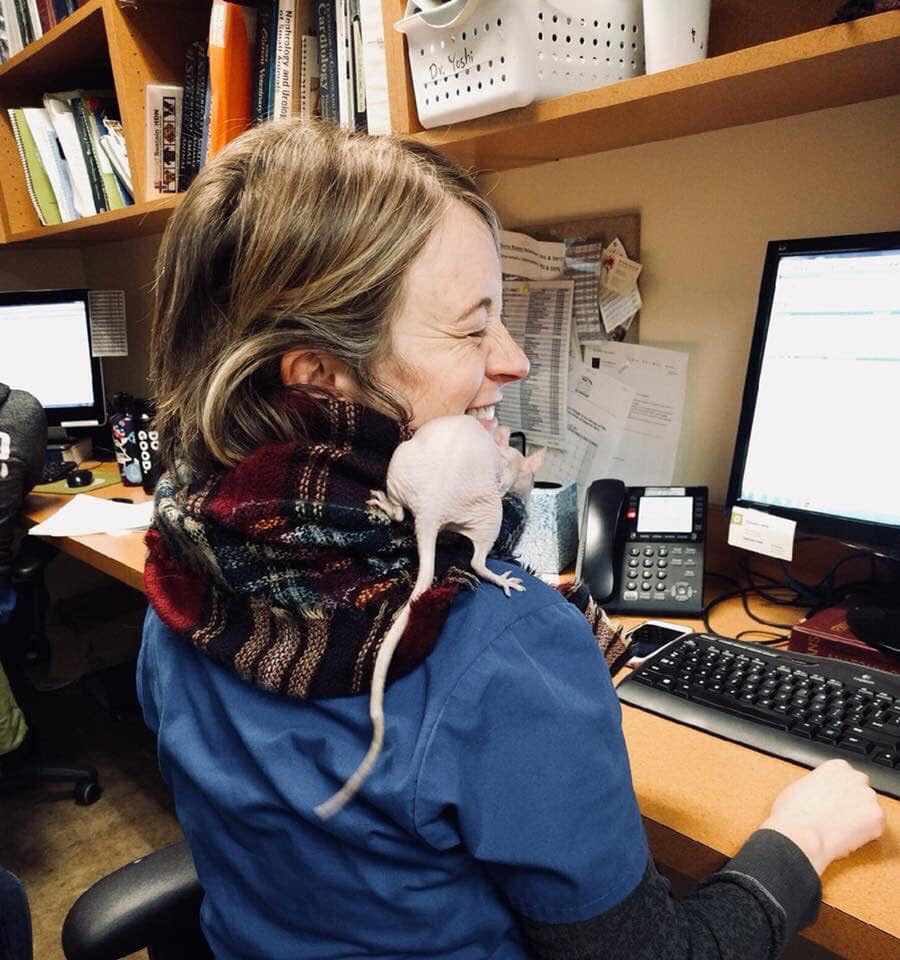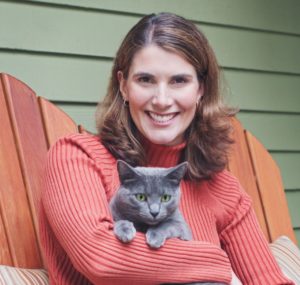As vets, we have wins and losses. That’s the job. And amidst challenging clients, long work hours, insurmountable debt, huge caseloads and attempts at work/life balance, it is easy to lose track of why we entered this field. We advocate for the innocent, we heal those who are deeply loved (and in that process, those who love them), and when the time comes, we give them a death with dignity.
Often I don’t feel sad after a euthanasia. I normally feel the burden of responsibility, but not sadness. And that is a choice I actively make; we as veterinarians can’t emotionally survive if we don’t put up those barriers. But that is a dangerous path – barriers become walls, and walls become apathy.
BUT, once in a while, a critter comes along who dulls the sharp edges of those barriers, who reminds us why we choose this career in the first place. A sweet animal who makes us feel not only their loss but the loss of all the other animals we’ve helped to die.
In my case, that critter came in rather… unusual… form.
Andie was a hairless rat, with a kink in her tail. She was presumably found abandoned in a graveyard five months ago. When I carried her around in my scarf under the guise of “monitoring” her (her owner saw riiiiight through that), she surprised and delighted my colleagues. She was so imperfectly perfect. She melted my heart in a way far “cuter” critters have failed to do.
Yesterday, I was the one to give her her last breath. And I feel so, so deeply, painfully sad about that; yet I also feel honored that she arrived in my life just in time to give me such a beautiful kick-in-the-shins to remind me to, you know, FEEL once in a while.
Goodbye, sweet Andie, and thanks for the reminder.
The views and opinions expressed in this article are those of the author and do not necessarily reflect the position of the DrAndyRoark.com editorial team.

ABOUT THE AUTHOR
Carrie Daly is a 2009 graduate of the University of Minnesota and a transient ER veterinarian – having practiced in Hong Kong, Minnesota, Oregon, and soon Colorado. She is a mom to 4-year-old twins and a 3-year-old son, and thus considers herself to be both a manager and purveyor of chaos. She enjoys international travel, unsuccessful attempts at meditation, running trail ultramarathons, writing on her Facebook blog (The Five Mayhems), and above all else – napping.

